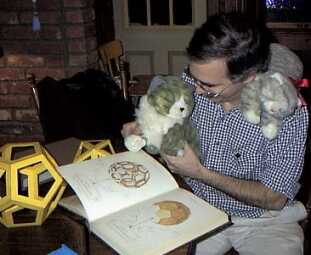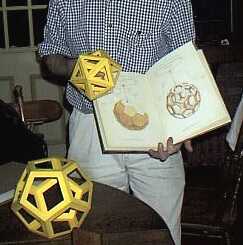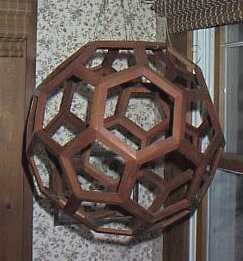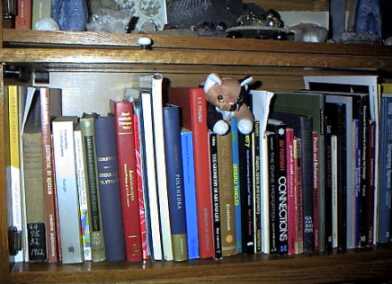"I have many books on making geometric shapes. When I was first making things out of paper, I learned a lot about geometric shapes from a book called Mathematical Models by Cundy and Rollett. I got it out of the library when I was a kid, and I had it probably two or three years before I returned it. It had all kinds of mathematical models: wood, paper, string, drawing an ellipse with two thumbtacks and a string... mathematical constructions. I learned a lot of mathematics while making things that way, and it never stopped.
I've made lots of paper polyhedra from the books Polyhedron Models and Dual Models by Magnus J. Wenninger. Those are the most comprehensive books for paper templates. You have to be a complete fanatic. Some of the models take weeks of fulltime work to make, but they're really spectacularly beautiful."
You might also like to try Wenninger's Polyhedron Models for the Classroom.
| "Leonardo da Vinci illustrated Luca Pacioli's 1509 book De Devina Proportione (The Divine Proportion). The drawings are beautifully hand-colored. There are about 60 illustrations in the book. For the 500th anniversary of the book, I am recreating wooden models, similar to those which Leonardo must have had when making these drawings from life." |
 |
 |
"These are some simple paper models. It is much harder to make them out of wood." |
| "I call this one Leonardo Project. It is made of 180 pieces of cherry wood. No one knows how large Leonardo's models were, but they were probably smaller, since Pacioli likely transported them around from place to place when he gave lectures. This one is 14 inches across. It is a truncated icosahedron. If you have an icosahedron (20 triangles) and you cut off the corners, it creates pentagons. |
 |
The vertices and edges show the shape of what's called a carbon 60 which is nicknamed a buckyball. This is also the shape of a soccer ball."
Do you ever get tired of always making things geometric?
"I haven't gotten tired yet. There's such an enormous depth to mathematics. I'm always learning new things and getting new ideas for sculptures. I don't expect it to end soon."
It was time for our visit to end, though. We didn't want to go! But we found another way to keep the visit going. Come along!








